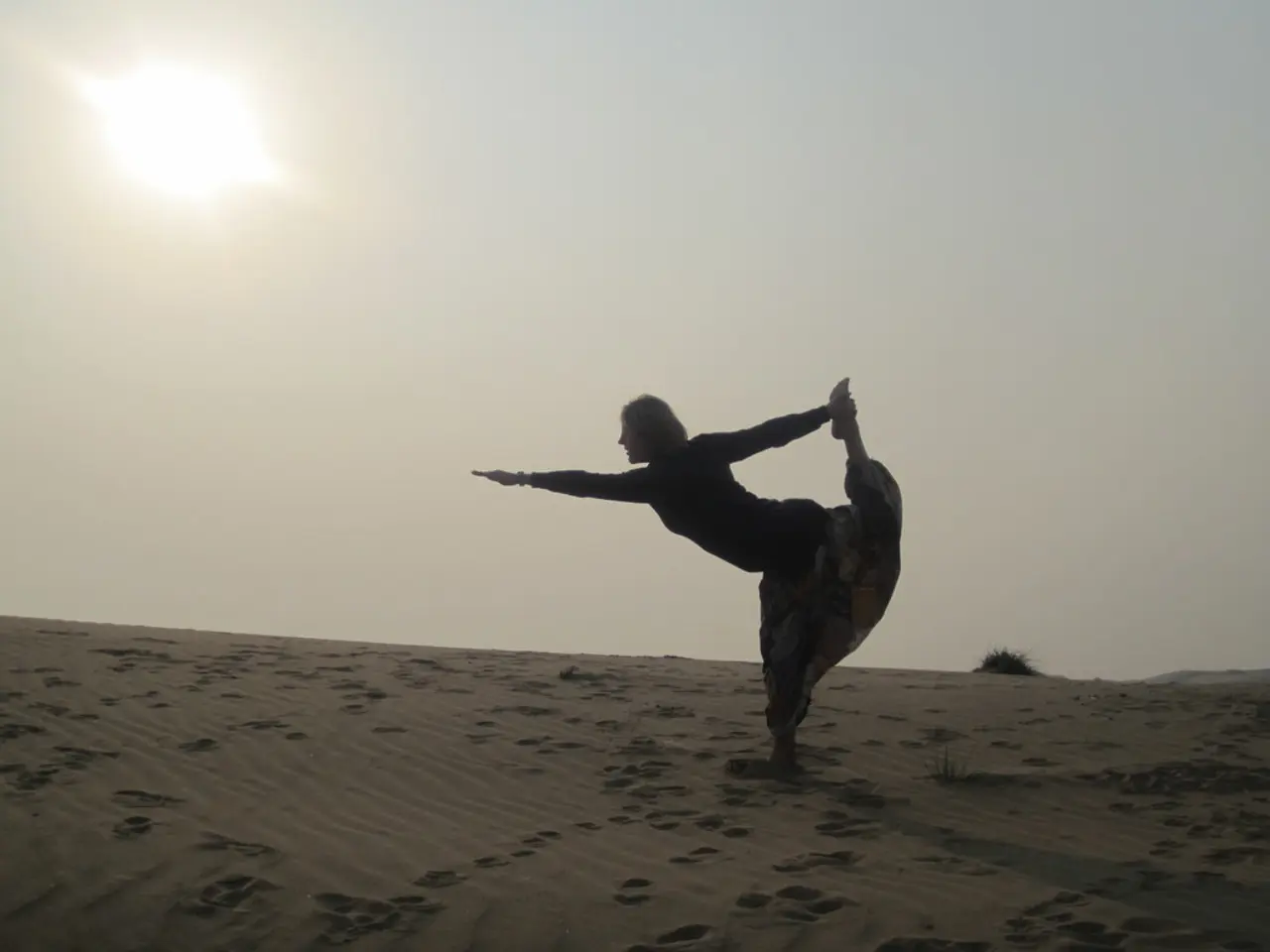Techniques for Alleviating Stress and Anxiety Through Breathing
In the hustle and bustle of modern life, finding ways to manage stress is essential. Fortunately, controlled breathing exercises, borrowed from centuries-old yoga and meditation traditions, offer a simple yet effective solution. Here are some techniques that can help lower blood pressure, promote feelings of calm and relaxation, and relieve stress.
According to physiologist Alison McConnell, the abdominal breathing technique can be particularly beneficial. This method involves placing one hand on the chest and the other on the belly, taking a deep breath in through the nose, allowing the diaphragm (not the chest) to inflate with enough air to create a slight stretching sensation in the lungs, and slowly exhaling. McConnell suggests practicing this technique for 10 minutes each day to help reduce heart rate and blood pressure.
Another technique is the abdominal breathing's close cousin, the 4-7-8 Breathing, or "relaxing breath". This method, which has roots in yoga's pranayama, involves inhaling for 4 counts, holding for 7 counts, and then exhaling for 8 counts. It can help fall asleep faster and is useful for those struggling with insomnia.
For those facing major deadline pressure at work, Nadi Shodhana, or "alternate nostril breathing", can provide a refreshing boost. To do this, start by sitting in a comfortable meditative pose, press the tips of the pointer and middle fingers into the palm, and press the thumb on the outside of one nostril while inhaling deeply. Exhale through the open nostril, and then repeat the process, switching sides every minute. Nadi Shodhana can help refocus and reenergize during times of stress.
Sama Vritti, or "equal breathing", is another technique that can help in falling asleep by taking the mind off racing thoughts. To practice Sama Vritti, one should sit or lie down in a comfortable position, inhale for 4 counts, and then exhale for 4 counts, with all inhalations and exhalations made through the nose.
The progressive muscle relaxation method, on the other hand, involves intentionally tensing and then releasing each muscle group one at a time to nix excess tension from head to toe. Closing the eyes and focusing on tensing and relaxing each muscle group for 2 to 3 seconds can help with relaxation.
Lastly, Kapalabhati, or "Skull-Shining Breath", can help wake up the body, shake off stale energy, and wake up the brain. To do Kapalabhati, begin sitting in an upright position with good posture and your hands on your knees. Take a long, slow inhale through your nose, then exhale powerfully by contracting the lower belly.
While the six experts recommending these controlled breathing exercises for stress relief are not explicitly named, Professor Thomas Loew, a psychosomatics and psychotherapy professor at the University Hospital Regensburg, strongly endorses controlled and prolonged breathing exercises such as the 4-7-11 method for stress relief. Other listed sources refer to general expert consensus on breathing techniques' efficacy but do not specify six individual experts.
Incorporating these controlled breathing exercises into your daily routine can help you find a moment of peace amidst the chaos, promoting overall well-being and stress reduction.








